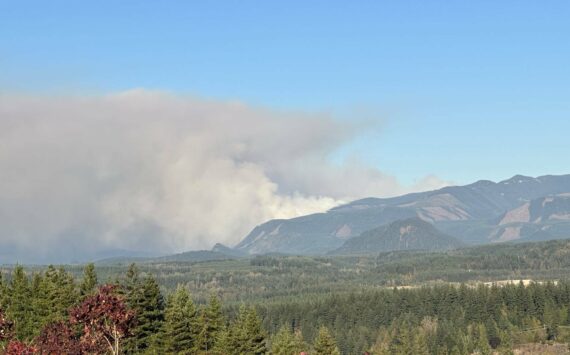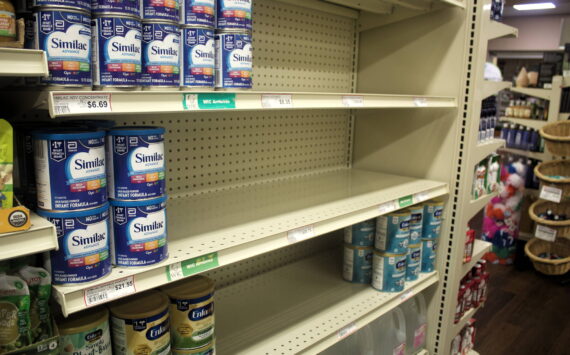Being ready is the most important step
By Morf Morford
Tacoma Daily Index
Disasters can take many shapes. From earthquakes to power outages and disease epidemics, unexpected threats to our individual or community well being can come from any quarter.
From the shaking of the ground beneath us, to the air-borne microbes around us, challenges to our health – or even our survival – are everywhere.
If we learn anything from our recent experience with COVID-19, it is that preparation – in all of its forms – is essential.
Oddly enough, the most persistent messages regarding the recent outbreak was the continual repetition of what we should have already known; wash your hands, stay home if you are sick, keep an adequate supply of essentials on hand and take care of yourself. Don’t shake hands. And perhaps above all, don’t panic.
And as we have seen to our shame, we also need to ask our fellow citizens not to hoard or gouge others for those essential items.
As always, it seems, some of us, either as individuals or as communities, are more prepared morally, psychologically or materially for disaster.
Some, as we have seen, thrive on panic and chaos, others calmly and quietly prepare for the crisis no matter what form it takes.
We in Washington are fairly good at preparing for a crisis. It might be because we have had earthquakes and fairly severe storms the past few years. An active volcano hovering over our field of vision might have something to do with it, too.
A recent study looked at how prepared states are for any public health or natural disaster –https://quotewizard.com/news/posts/states-prepared-for-health-and-natural-disasters.
It turns out that Virginia, Connecticut and Colorado are the most prepared for public health disasters.
Wyoming, Arkansas and West Virginia are the least prepared for public health disasters.
And it is not your imagination – natural disasters have increased 165% in the United States over the last 40 years.
These natural disasters have increased in both frequency and intensity.
Because of this, on a national level, we have had to add a few words to our weather/climate vocabulary.
Polar Vortex anyone?
Some of the new weather and climate terms sound like something from a science fiction novel from the 1950s.
Polar vortex is certainly one of these words – it simply refers to a low pressure area—a wide expanse of swirling cold air—that is parked in polar regions.
During winter, the polar vortex at the North Pole expands, sending cold air southward. The polar vortex (more on polar vortexes can be found here – https://scijinks.gov/polar-vortex/) at the South Pole does the opposite – it sends cold air northward.
Either way, far colder (and extreme) weather than usual may occur in unlikely places – for us in the USA for example, freezes in Florida and other southern states have become almost predictable.


Other new terms for weather include derecho which means “straight,” and, fittingly, straight-line wind damage in contrast to tornado – which means a twisting wind storm, and haboob which is occasionally used interchangeably with any extreme dust storm, but is more frequently used in the context of a very intense dust storm wall that’s associated with the gust front of a severe thunderstorm. These can overwhelm a neighborhood or city in minutes, with wind speeds over 40 mph and dust so thick that there is zero visibility.
As the haboobs can begin suddenly, be more intense than the average dust storm, and pick up any small particulate matter (such as infectious fungi and industrial metal waste) in their path, there is a serious risk posed to both transportation and public health.
Being in one of these is like being caught in a sand blaster with every disconnected object in flight having a lethal trajectory.
Besides threatening our health and well being, disasters can threaten our economic base.
The National Academies of Science, Engineering and Medicine estimate pandemics could have a $6 trillion dollar impact on the global economy in the 21st century.
The CDC estimates a global disease outbreak could cost the United States billions in lost trade and tourism.
Coping with catastrophe is more than washing hands and stocking up on toilet paper, however. We need solid and reliable policies and procedures.
In other words we need an infrastructure of health care, financial support and basic supplies.
Our hospitals need to be prepared and equipped, our economy needs to have a system of paid time off so workers can afford to stay home without putting themselves into financial jeopardy and vaccinations need to be readily available – and affordable.
Like any stress test, COVID-19 is a barometer of how prepared we are (or not) for major catastrophe.
When the World Health Organization (WHO) describes the global response as displaying an “alarming levels of inaction” if nothing else, we know we can do better.
As WHO went on to say “All countries can still change the course of this pandemic. If countries detect, test, treat, isolate, trace and mobilize their people in the response”.
It’s not that complicated. It just takes leadership.
(1*) I don’t know about you, but my eyes glaze over when talk turns to billions and trillions. For a little reference, if you stacked one million pennies on top of each other, the tower would be about a mile high. A billion is a thousand times a million, so a stack of one billion pennies would be about 870 miles high. One trillion is one thousand billions. If you stacked one trillion pennies the tower would be about 870,000 miles high … which means it would reach to the moon and back and then back to the moon again.







